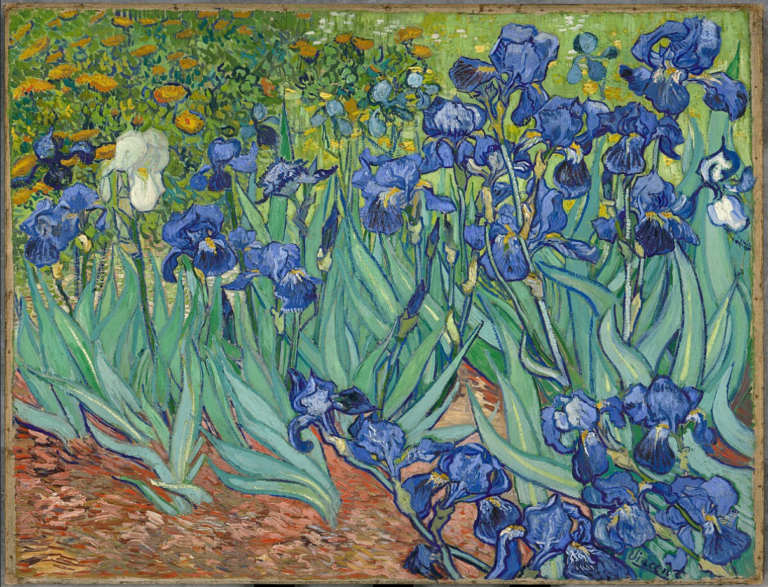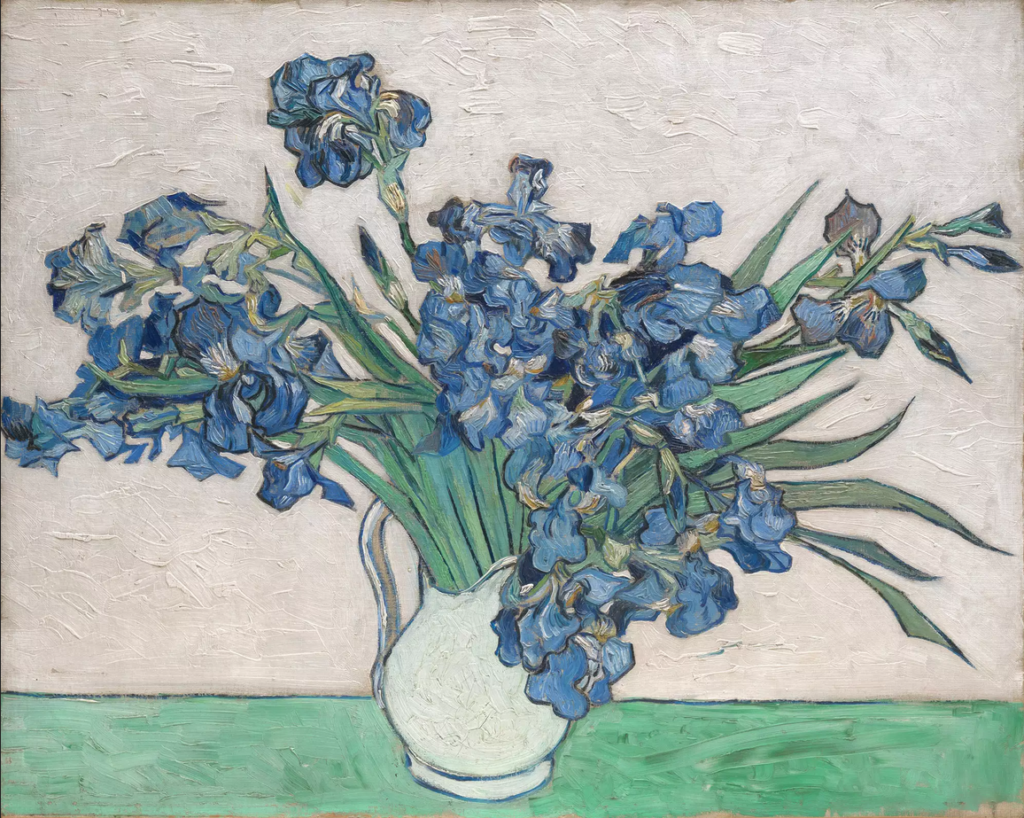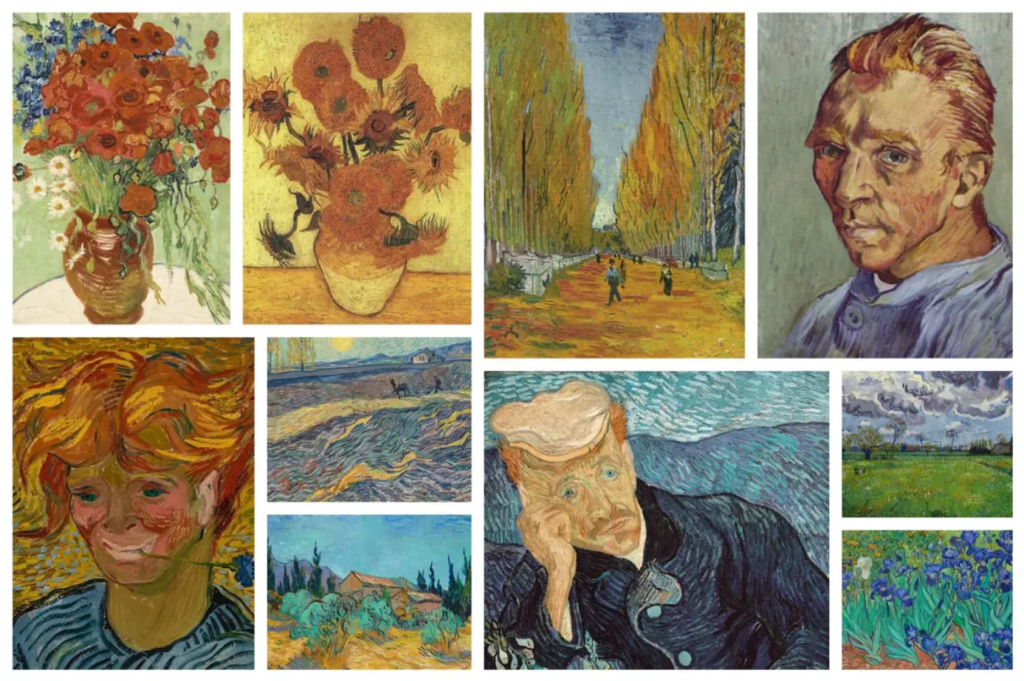
Why is ‘Irises’ by Vincent van Gogh, 1889, one of the most renowned works in the world?
The creation of Vincent van Gogh’s “Irises” took place during his stay at the Saint Paul-de-Mausole asylum in Saint-Rémy-de-Provence, France, following a period of struggle with psychosis and self-mutilation. Painted in May 1889, just a month into his treatment, “Irises” marked Van Gogh’s initial artistic endeavor during this therapeutic phase. Describing it as “the lightning conductor for my illness,” he turned to depicting the irises in the asylum garden to maintain his mental stability.
In 1987, “Irises” achieved the status of the most expensive painting ever sold, holding the record for two and a half years until it was purchased by Alan Bond for US$53.9 million. However, Bond faced financial constraints, leading to the subsequent resale of the artwork in 1990 to the J. Paul Getty Museum in Los Angeles, USA.

Presently, “Irises” ranks thirty-first on the inflation-adjusted list of most expensive paintings ever sold, and 102nd when inflation is disregarded. Despite its financial accolades, the question remains: why did Van Gogh choose to paint irises during the early stages of his treatment, and what contributes to the enduring significance of this piece?
Van Gogh’s decision to paint irises amid his treatment stemmed from a desire to combat the challenges posed by his mental health. Episodes of psychosis and a concern for his fellow patients’ conditions prompted him to explore the vibrant flowers in the asylum garden. Influenced by Japanese art, particularly its decorative patterns seen in woodblock prints, Van Gogh aimed to convey a sense of life without tragedy through his depiction of irises.
The absence of known drawings or sketches suggests that Van Gogh considered “Irises” a mere study. Still, his brother Theo, a steadfast supporter of his work, deemed it worthy for exhibition. Theo submitted the painting, alongside “Starry Night Over the Rhone,” to the annual exhibition of the Société des Artistes Indépendants in September 1889.

Van Gogh’s love for flowers, their availability outside his window in the asylum, and the popular appeal of flower paintings further motivated him to choose irises as his subject. With hopes of building a successful career, he believed that people would be drawn to buy paintings of colorful irises.
Despite Van Gogh’s struggles for recognition during his lifetime, his posthumous acclaim is undeniable. “Irises” showcases his meticulous study of the flowers’ movements and shapes, resulting in a variety of unique silhouettes. The faded red pigment and the transformation of the flowers to blue over time have not diminished the painting’s value. The uniqueness of each iris and Van Gogh’s meticulous attention to their details contribute to the enduring admiration for his work.

Van Gogh’s mental state deteriorated after creating “Irises,” adding a poignant layer to its significance. Critics recognize the painting not only for its artistic merit but also for its profound meaning to the artist. It symbolizes a sunny day filled with hope, life, and desire. Some speculate that the single white iris in the painting may represent Van Gogh himself, embodying his peaceful state of mind.
While “Irises” has been showcased in various art exhibitions globally, only one occurred before Van Gogh’s death. Despite his absence, the timeless nature of “Irises” continues to captivate art enthusiasts worldwide, not only for its technical brilliance but also for the life-affirming message it conveys.